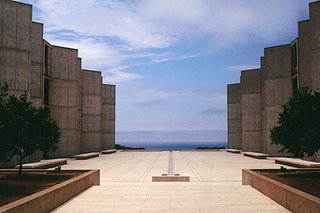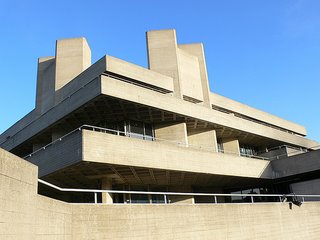Good news for humanity. The mayor of Boston wants to sell City Hall and build a new one elsewhere, preferably with a view of the harbor. Hopefully, this drives a stake through the heart of one of the ugliest buildings ever conceived by man.
Boston’s City Hall is a concrete bunker guarding a windswept brick plaza envisioned and constructed back in the sixties as a near perfect expression of that era’s homage to expert wisdom.
 Experts say this is a significant architectural creation. The AIA gave it its highest honor in 1969. In 1976, some other panel of experts supposedly called it one of the most beautiful buildings of the 20th Century which says a lot about the vileness of that century and the tastelessness of the emperor’s clothiers. The mutants and ordinary Joes who make up the general public hated this building instantly.
Experts say this is a significant architectural creation. The AIA gave it its highest honor in 1969. In 1976, some other panel of experts supposedly called it one of the most beautiful buildings of the 20th Century which says a lot about the vileness of that century and the tastelessness of the emperor’s clothiers. The mutants and ordinary Joes who make up the general public hated this building instantly.And how could you not hate it? For Bostonians, it replaced the perfectly appropriate City Hall on School Street.
 The old City Hall is a dignified and proud building of human scale that invites people to enter, to admire, and use it. It speaks a boastful language we all understand but no longer dare to speak.
The old City Hall is a dignified and proud building of human scale that invites people to enter, to admire, and use it. It speaks a boastful language we all understand but no longer dare to speak.The old City Hall was the stage on which gothic political drama played out in the 19th and early 20th centuries. It’s where cigar smoking swells tended to a machine that churned out patronage and revenge.
Perhaps in response to this riff raff, Boston’s elite chose a replacement that was a temple of technocracy . . . a machine for breaking the spirits of living things.
The new Boston City Hall features cold, dank corridors of rough concrete. At the center of the building is an atrium open to the elements which, in Boston, tend to be cold and wet for most of the year. It‘s notable that the city budget director filed a disability claim after slipping on ice inside the building. The place is literally the DMV, animal control, and city morgue all wrapped up in one demoralizing package.
I guess it’s appropriate that Boston’s Old City Hall is now a Ruth’s Chris Steakhouse because the current one looks like a slaughterhouse.
The vast plaza outside the Boston Shitty Hall was created by the awesomely overrated I.M. Pei as a place for what experts at the time called “the masses.” These were sort of like people except that they only existed in large anonymous groups. Individually, they didn’t exist at all. They certainly didn’t have opinions that amounted to anything. These “people” are often represented as stick figures on architectural renderings. To architects, of course, those are not renderings but actual likenesses.
The plaza is as inviting as a free fire zone. Crossing it is an odyssey of angst. In winter it is a frozen steppe. In summer, a scorched wasteland. It’s justly reviled as one of ">the most disappointing places in America . . . and that’s saying something.
How could such a dismal failure ever come into being in the first place? You’d think alarm bells would have sounded immediately. The winners of the architectural competition to build a new City Hall -- Gerhard M. Kallmann, Noel M. McKinnell, and Edward F. Knowles -- were three professors who had never built a building before.
And why build with poured concrete, a material that’s clammy to the touch, discolors in contact with moisture and cannot be modified with anything less than jack hammers and dynamite?
And ultimately, why tear the heart out of a great city and replace it with a structure that has as much in common with Boston’s history or vernacular style as does Tiananmen Square's Great Hall of the People?
Because Kallmann, McKinnell and Knowles were experts, that’s why.
And if you doubt their qualifications, be assured that these guys speak fluent expertise. Here’s how they describe their sinister creation:
“The facades achieve their coherence by means of an elemental composition of aedicular motifs with emphatic hoods at the ceremonial level.”
Look at this picture and dare to find the coherence:

The architects are basically saying, “Who are you going to believe? Us, or your own lying eyes?”
“The use of an inventive technology and the allusion to historic precedent in the siting as well as the compositional scheme of the building result in a density of image, which is both modern and timeless in nature.”
Boston City Hall is about as timeless as a Peter Max poster. It practically screams out Dick Cavett! Wide neckties! Urban renewal! Tin soldiers and Nixon’s coming! This may be the least timeless building in America . . . and thank God for that.
Those who idealize the Sixties as a time of peace and love tend to overlook the technocratic barbarity that gave the Age of Aquarius its characteristic soul-crushing zest-appeal!
This was the age of expertise. Experts like Robert McNamara told us we were winning in Vietnam, Experts at RAND told us that poverty could be defeated. Experts like George Kennan told us that communism could be contained. Experts like Werner Von Braun told us that space was conquerable. There was a program for every problem and progress was measured in cold facts: body counts, case loads, megatons, and rocket thrust.
By the logic of the Sixties, there was no higher ideal than honesty and no greater evil than hypocrisy. This ideal appealed to clinical researcher and hippie alike. On the intellectual side, facts don’t lie. On the visceral side, if it feels good, do it.
But dogmatic authenticity led people to build with unadorned concrete and believe it’s beautiful. Honesty can be brutal and that’s exactly what the age of expertise led to.
As expertise hardened into dogma, that dismal decade offered us such cultural advances as no fault divorce, Gent magazine, Mutual Assured Destruction, and a style of architecture that vastly exceeded anything the Nazis could conceive of to render cold-hearted inhumanity into structural design.
The aptly named Brutalist school of architecture was all the rage in the Summer of Love and you can see where its concrete fist has obliterated whole neighborhoods in London, Philadelphia, and New York. Here’s a very brief Hall of Shame:

Yale School of Architecture, New Haven

Salk Institute, La Jolla, California

The Royal Theatre, London

The Ford Foundation Headquarters, New York
(actually, this is a machine gun emplacement)
A far more comprehensive (and dispiriting) collection can be found here.
Sophisticates will say the term “brutal” in the architectural sense comes from the French "beton brut" which describes the beauty of raw concrete. But don’t be fooled. Brutality is what it’s all about.
In the 1960s and 70s, the enlightened experts built municipal buildings, schools, libraries, arts centers, and even public playgrounds in the style of Nazi pillboxes on the coast of Normandy. It’s either ironic that Brutalism prospered through government building projects -- because these buildings have never been popular with the public -- or it’s indicative of the public sector’s utter contempt for democracy.
But I think it shows how a perfectly good idea – to seek beauty in utility – can be so clearly and thoroughly corrupted once reason and debate gives way to creed. By the mid-1970s, to criticize Brutalism was to reveal yourself as an artless rube.
This is a common theme in cultural history characterized by crashing waves of creativity that wash away the old dogma and gradually recede to leave a new layer of dogma that seems orderly and stable until the next wave sweeps in. In architecture the layers tend to pile up like silt making a walk down an avenue like Broadway the architectural equivalent of a geology field trip down from the Kaibab Plains to the Colorado River a thousand feet below.
The difference between Bauhaus and Brutalism is that the latter make no pretense whatsoever to humanity. It was utilitarianism followed to an extreme so absurd that even its utility is denied.
Another truly remarkable accomplishment of beton brut architecture is that it manages to offend so many senses. Sure, it’s ugly to look at, but its hard rough surfaces are also unpleasant to the touch and they reflect sounds that are hard of the ears. Raw concrete also seems to have the same effect on vagrants that fire hydrants have on dogs . . . it is an irresistible invitation to urinate. So, Brutalism is unique in architecture for being the only style with its own smell. It may very well have a distinctively offensive taste but there are limits to my research.
The news of the impending sale and inevitable deconstruction of Boston City Hall is part of the long overdue revolt of the masses. Boston’s blighted City Hall and Government Plaza may give way to something even more awful, but we’re ready to take that chance.
It’s remarkable that the revolt has taken so long to gather steam but it couldn’t be more welcome. In New York, Marcel Breuer’s hideous Whitney Museum on Madison Ave. is about to be abandoned (my prediction) now that the Whitney has decided to build its annex downtown.
Another notable Breuer pile in New Haven has been converted into an Ikea billboard. And now one of the few examples of a Brutalist private home is being torn down in Westport, Connecticut as you read this.
That one, built by the Brutal master Paul Rudolph for a Holocaust survivor, has caused the usual indignation and disapproval from intelligentsia types but ultimately, Brutalism’s durable building materials are the most formidable obstacles to their own destruction.

Rudolph and his brutally honest beton brut.
There are still those entranced by the sirens of expertise. But even those acolytes have to admit that Brutalism is difficult to appreciate without years of intense indoctrination. Just as Mark Twain once said that Wagner’s music was better than it sounded, Brutalism’s defenders are left with one last argument, that these buildings are better than they look.
Don’t get me wrong, destroying the old style is not the same as liberating minds from dogma. There’s always a new canon waiting to take the old one’s place. Today’s faith seems to be a return to the purity of Modernism – an intellectual gymnastic move that requires you to refer to a historical precedent that was based on breaking historical precedent. But at least Lever House and The Seagram Building are beautiful and uplifting in their ways.
And a return to beauty is always a welcome development.


No comments:
Post a Comment